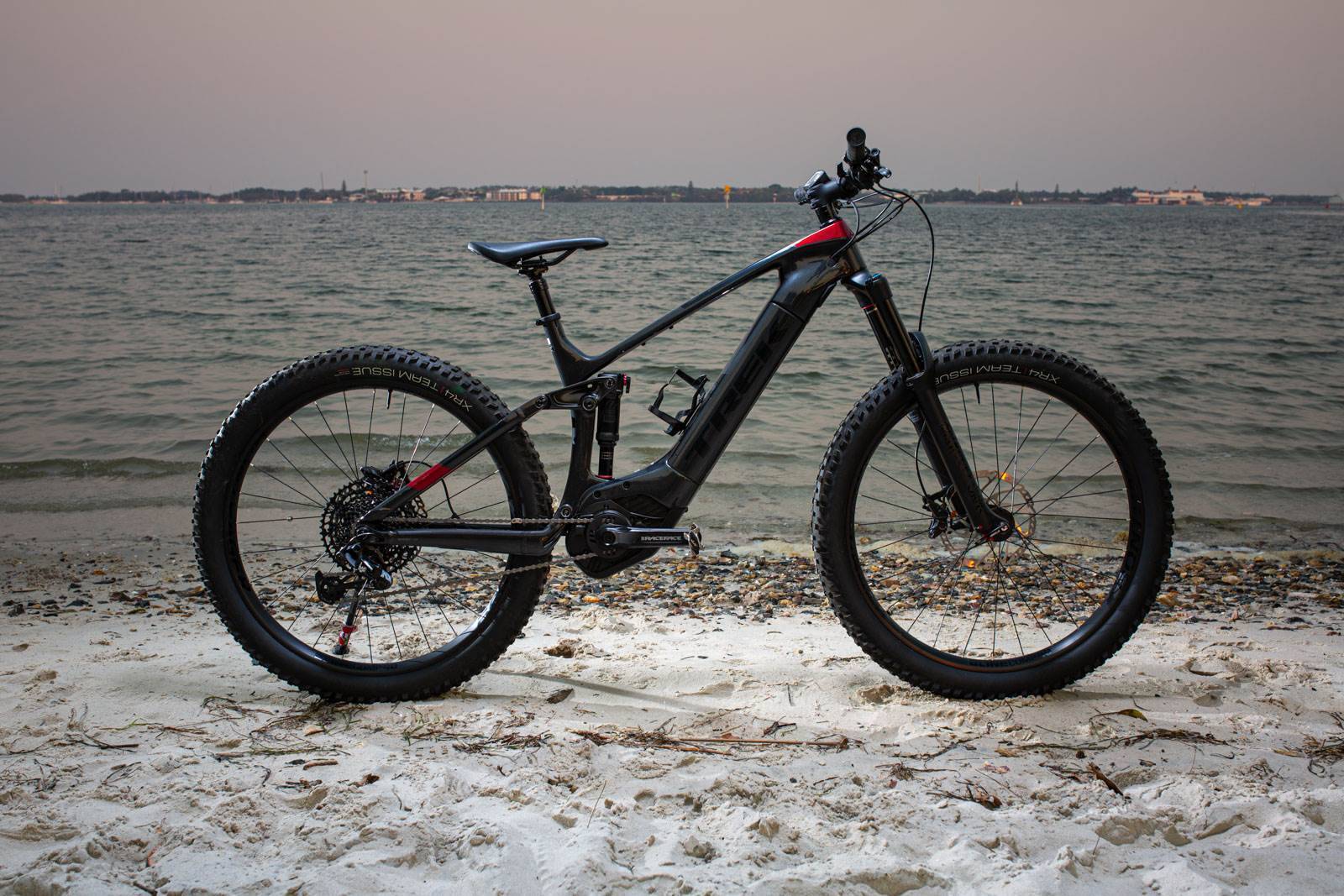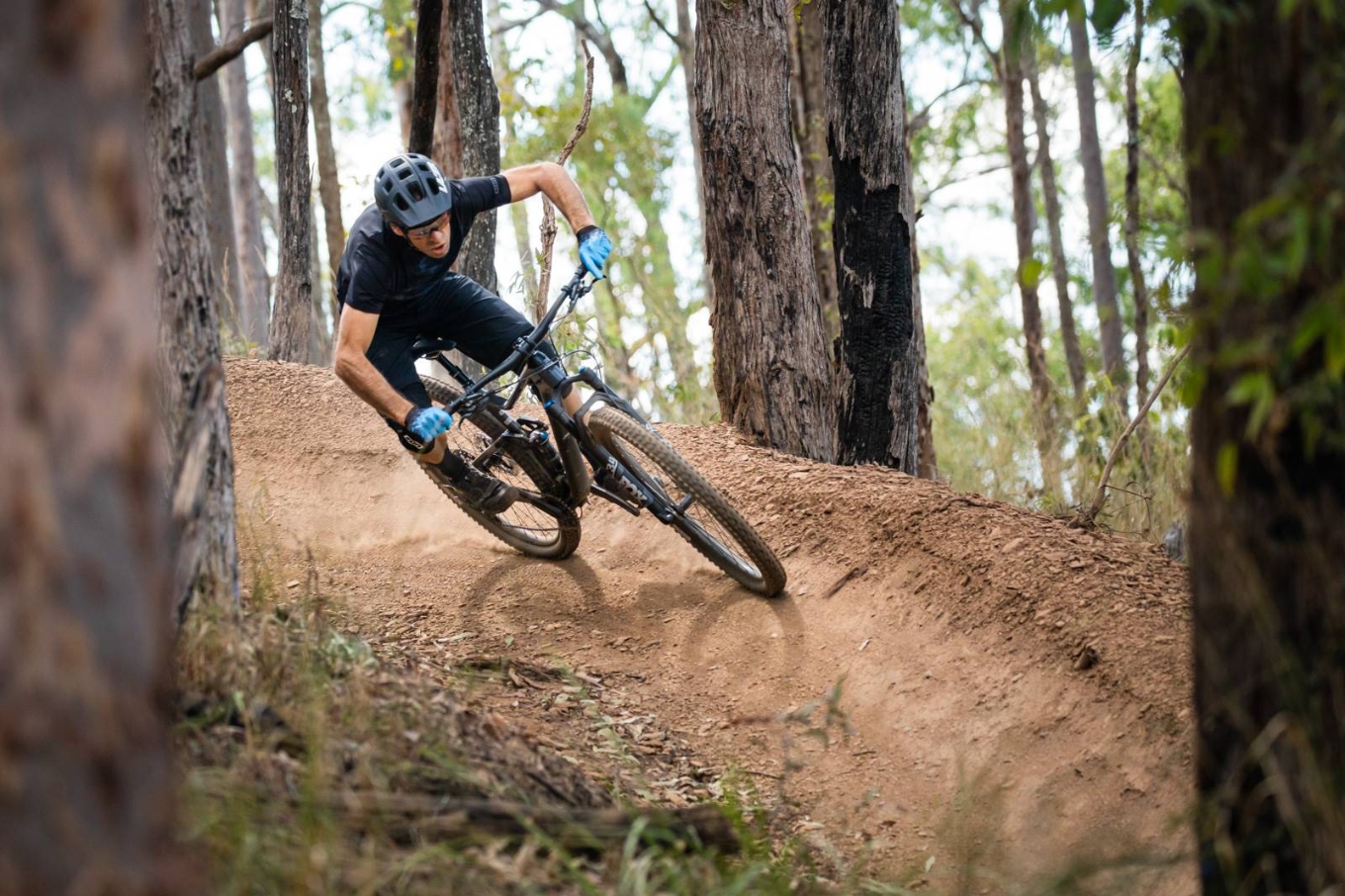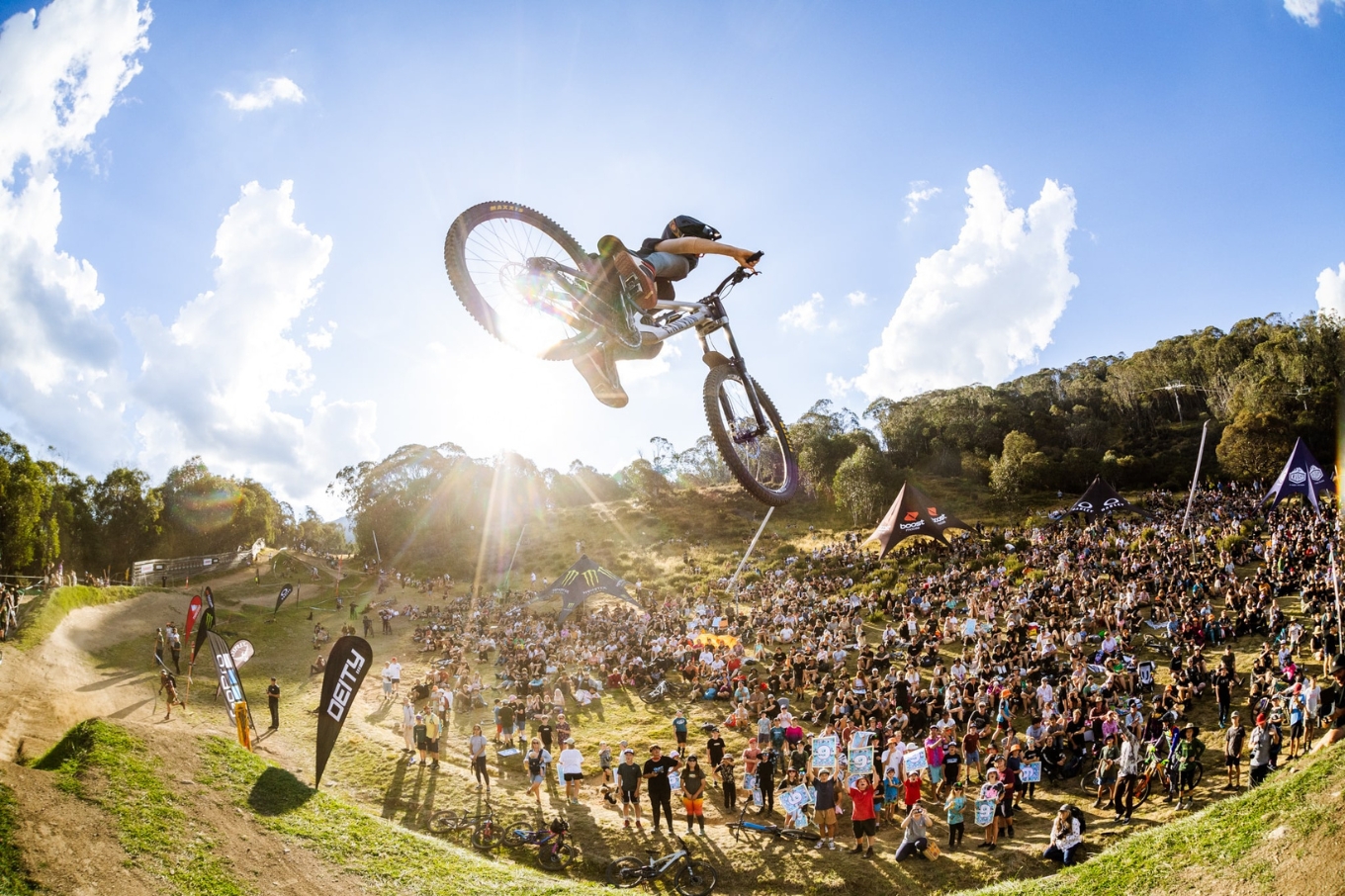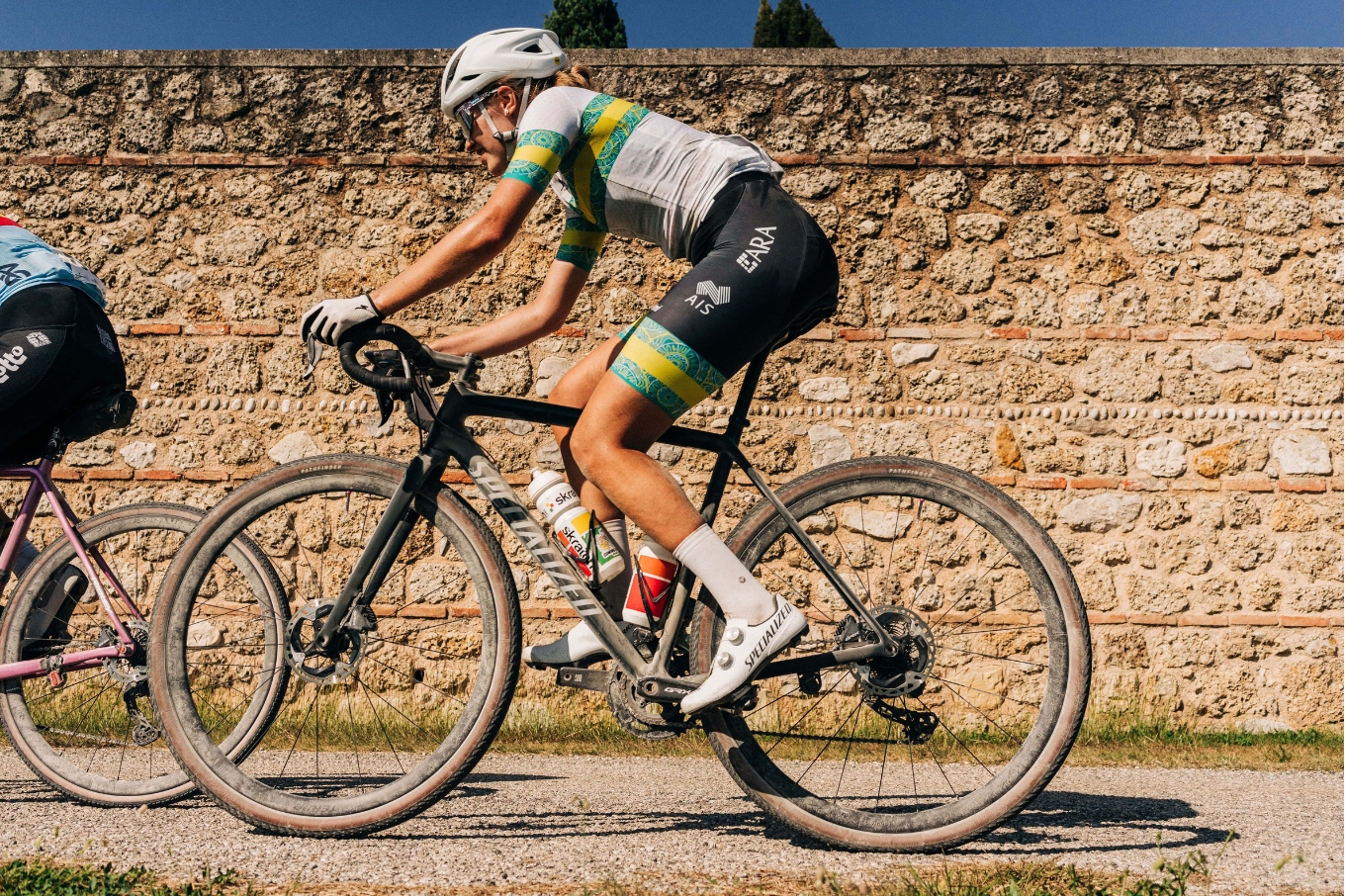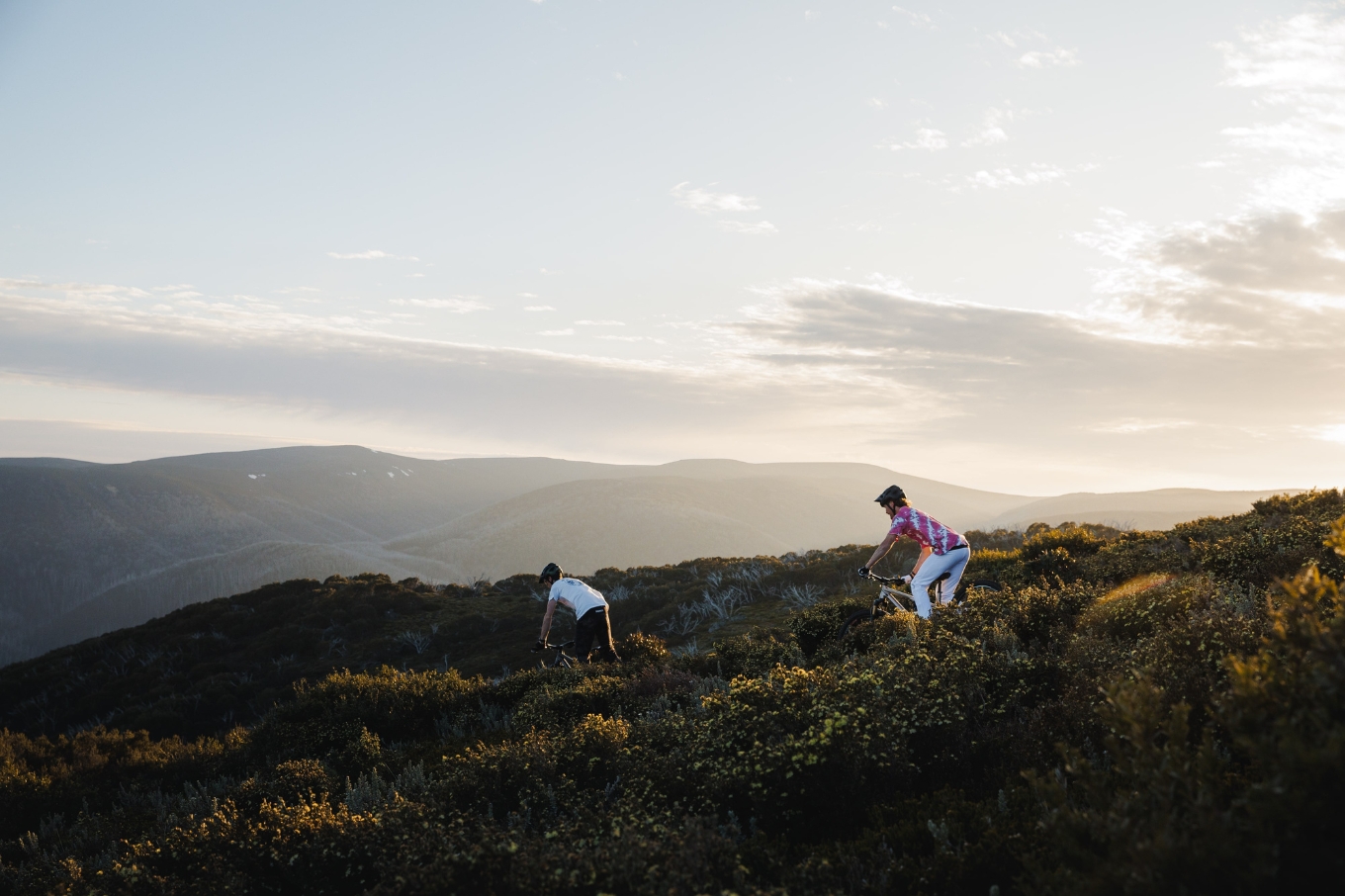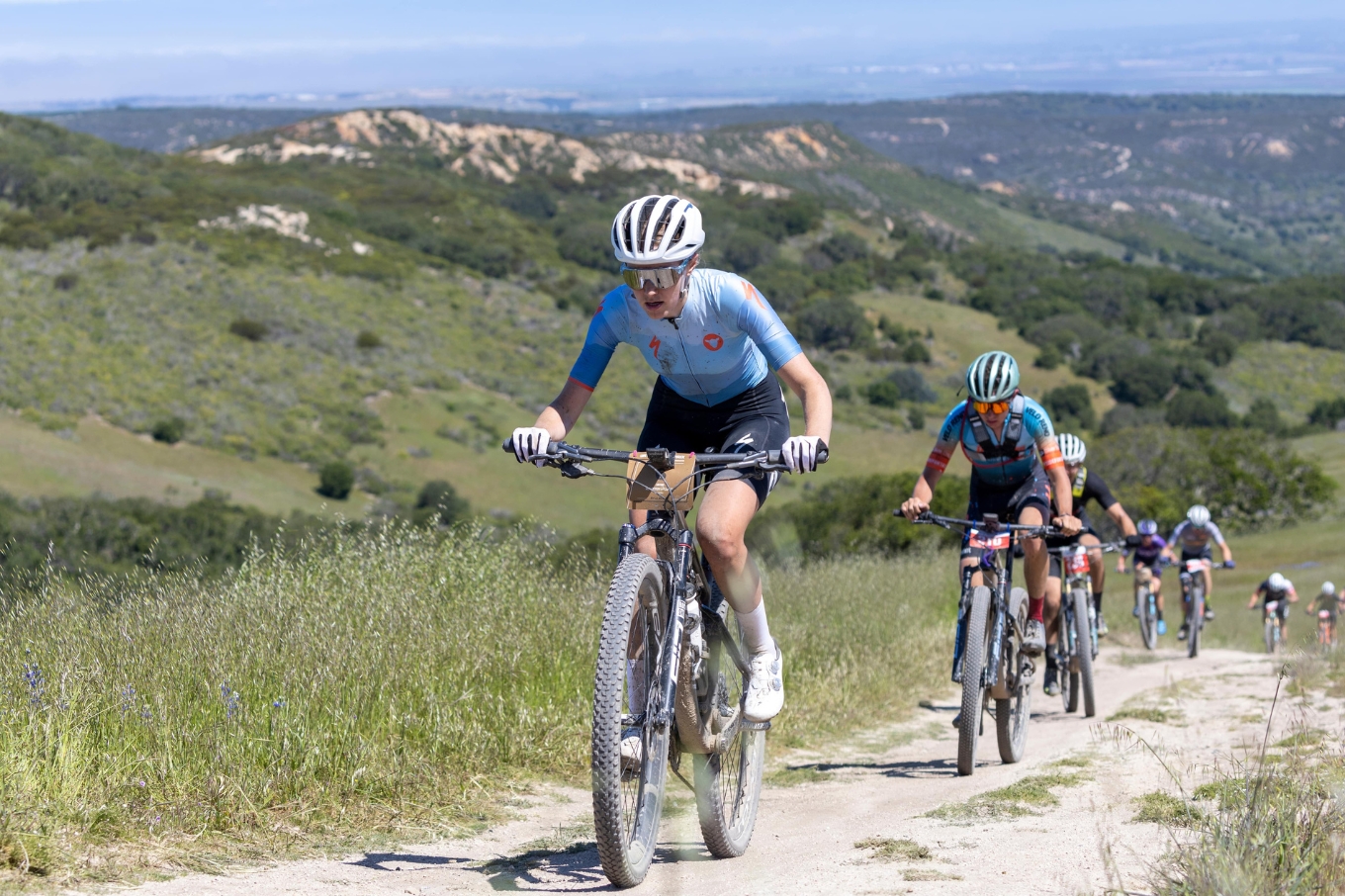TESTED: Trek Powerfly LT 9.7
The Trek Powerfly LT 9.7 is a carbon fibre eMTB that is ready to charge.
Trek has come quite a long way from the big red barn in rural Wisconsin, and its mountain bikes have always been solid performers. Trek makes a vast range of eBikes, covering everything from hardtails and commuters to our test subject, the Powerfly LT 9.7.
The LT 9.7 is the king of the castle, sitting at the tippy top of Trek AU's range of eMTBs (until the Trek Rail is available), with a carbon frame and plenty of squish, the brand say it's up to the task for burly singletrack and big backcountry adventures.
Initial Impressions
When I collected the Powerfly LT 9.7 from Trek’s Canberra office, the first thing I noticed was how long the bike was. With a wheelbase of 1235mm in my size M/L tester, it was nearly too long for the wheel trays on the Yakima FoldClick 2 hitch rack I’d brought with me — a decent portion of this length comes from the 475mm chainstays. While some eMTB’s have extended stays due to the motor configuration, Trek says the length was intentional on the Powerfly. Trek believes that part of the novelty of eMTBs is the ability to mountain goat up steep terrain you couldn't push up on a standard trail bike, and the extra length was to provide traction and stability when climbing.
The next thing I noticed was the 23.3kg weight as I lifted the bike onto the rack, which makes it a hair heavier than the YT Decoy and Norco Sight VLT 2.
The mainframe Trek’s top-end OCLV carbon fibre, with the 500Wh Bosch PowerTube battery neatly integrated into the downtube using the brand’s RIB (Removable Integrated Battery) system, it looks clean and frees up space in the front triangle for a bottle cage. The battery has a flip-out handle, and removal is tool-free.
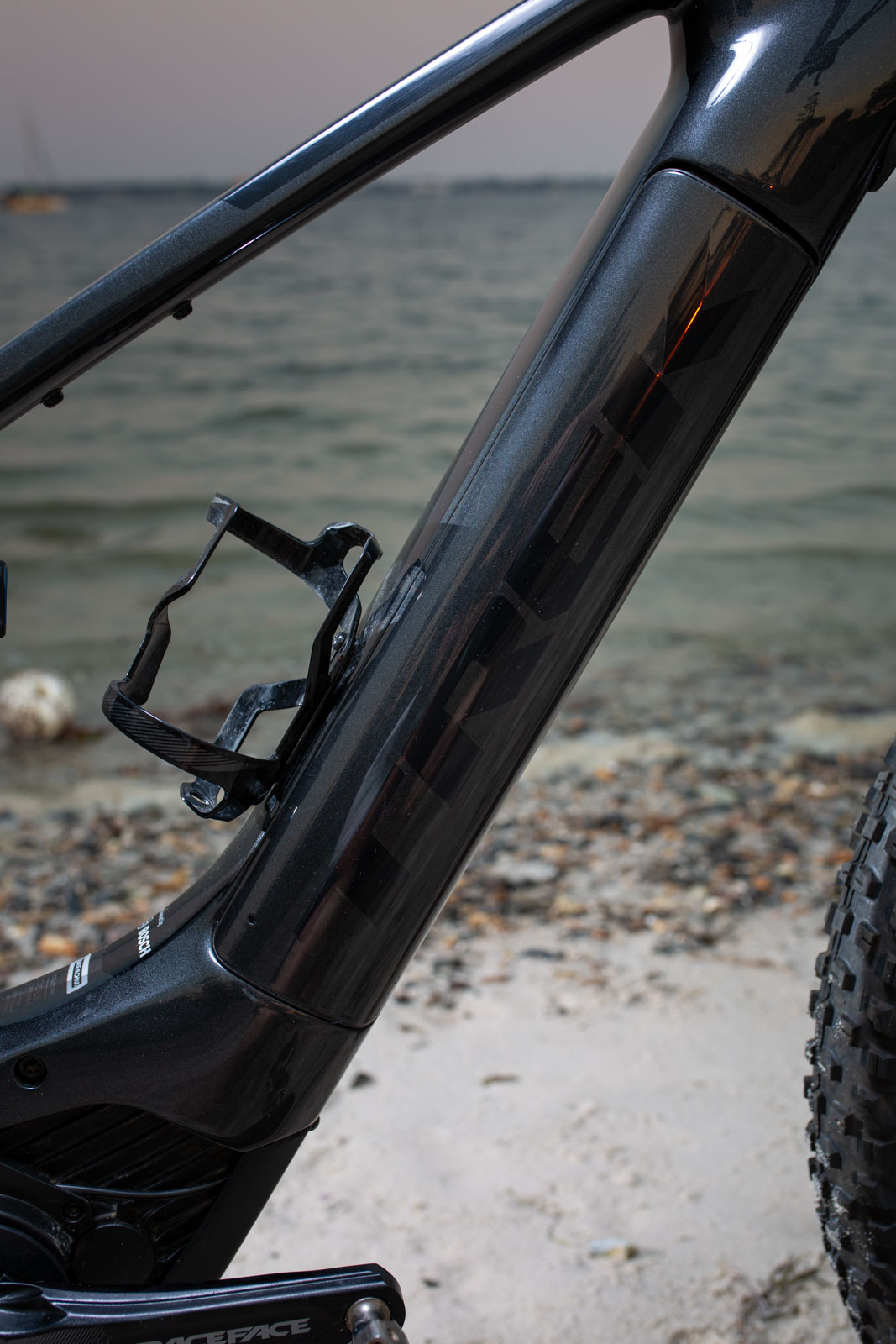
At the cranks, Trek has specced a Bosch Performance CX drive unit that can provide up to 250W and 75nm of pedal-assist controlled from a bar-mounted headunit.
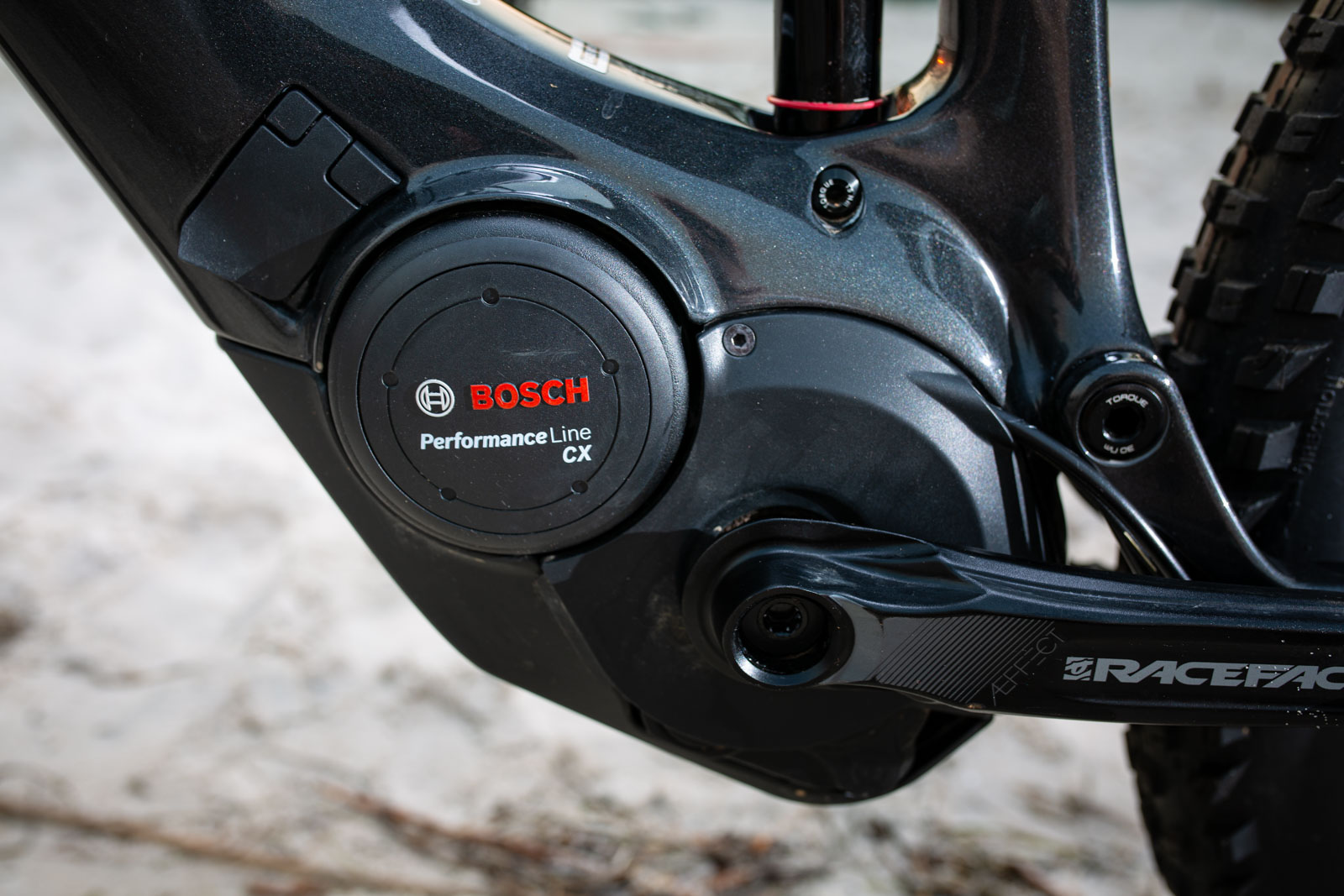
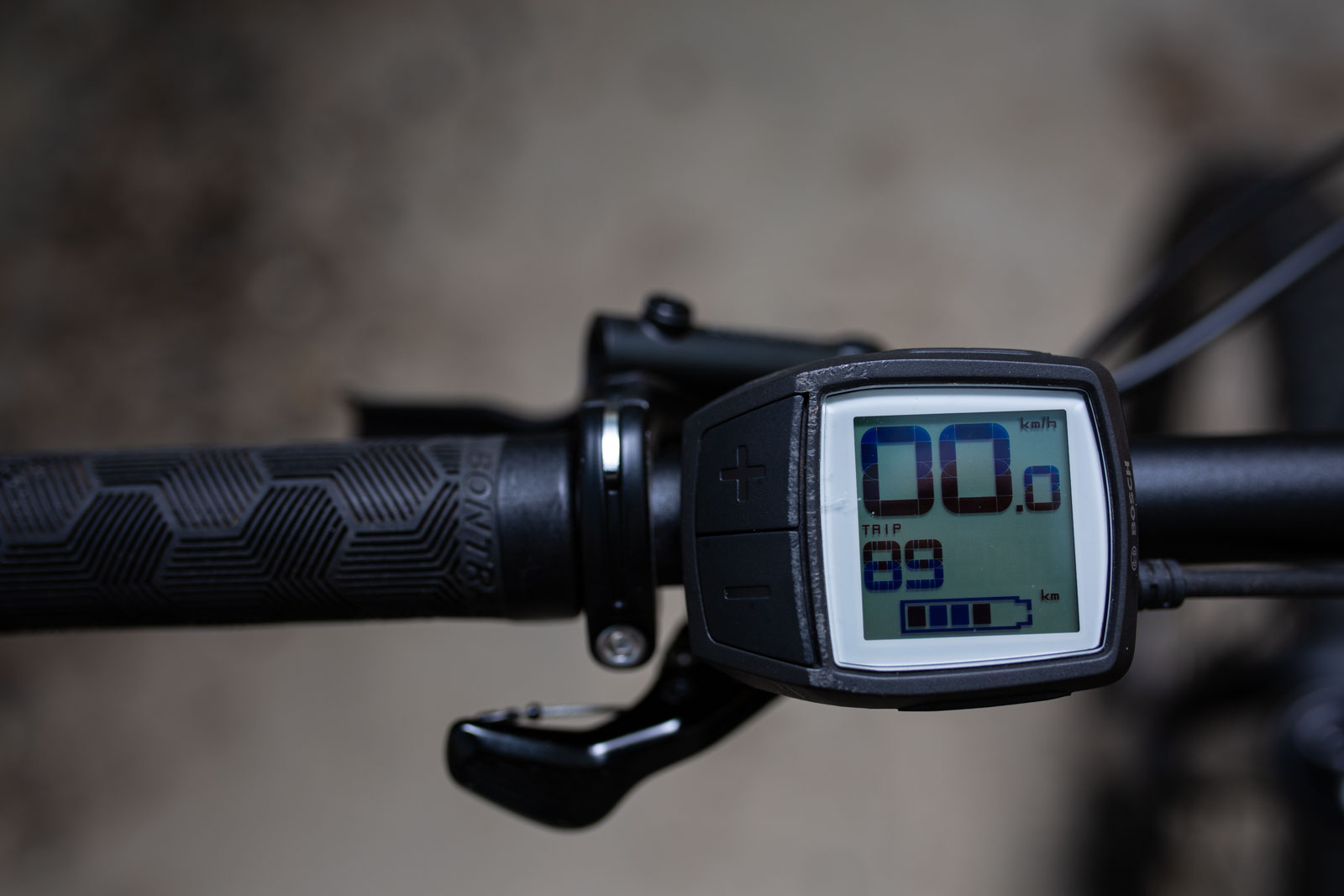
Clicking through the gears is a SRAM GX Eagle shifter, though it’s an eMTB version that only allows one shift at a time to prevent you from snapping chains like dry pasta. The cassette is also a burly eMTB rated cluster with cogs from 11 to 50t.
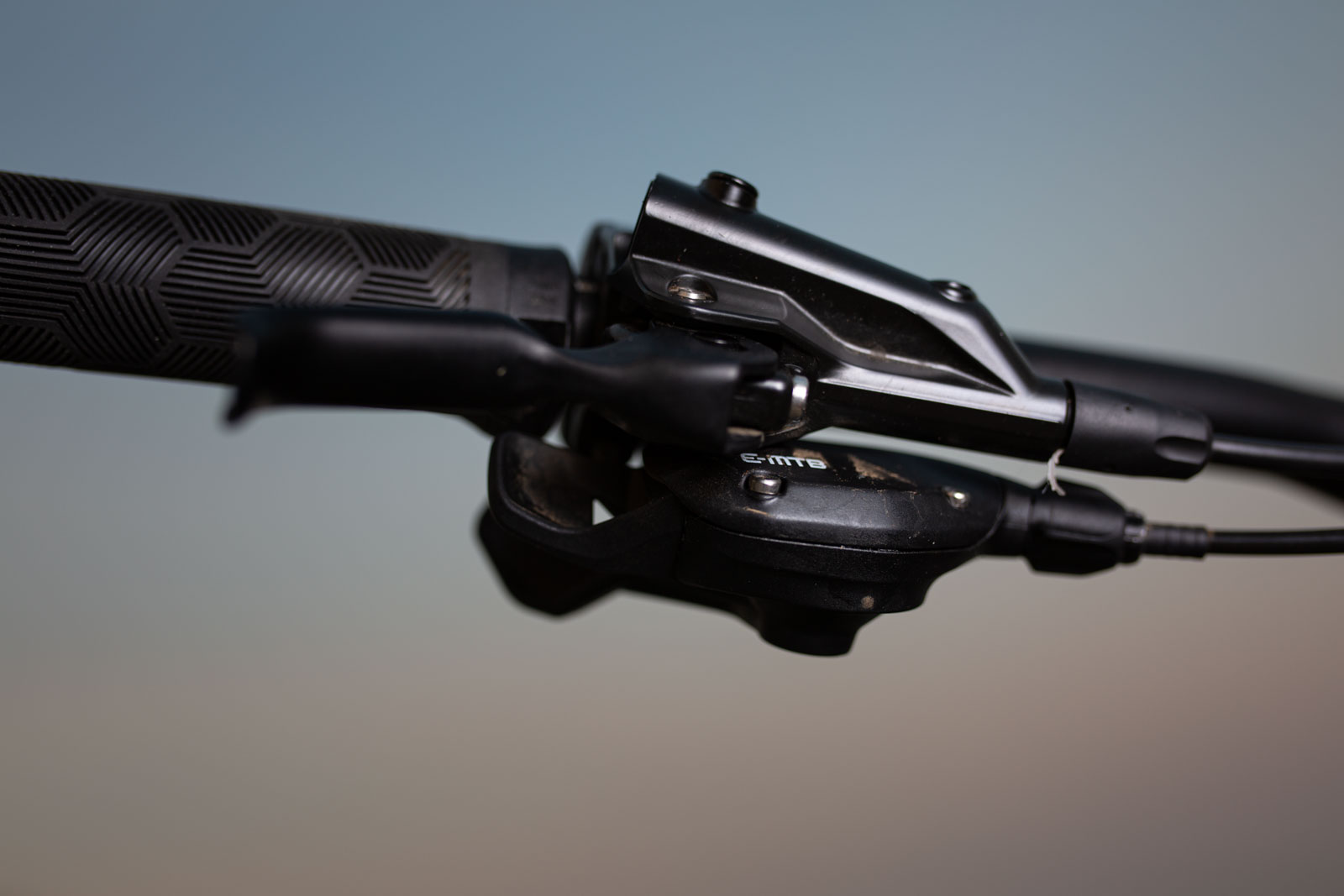
Trek calls the paint job Dnister black and Rage red, and it amounts to a stealthy looking ride. With a 65.5-degree head angle and 73.5-degree effective seat angle (low mode), the reach in our size ML Tester is 435mm, and the stack is 607mm. There is a pivot based flip-chip in the rocker that steepens the seat and head angle by half a degree and brings the bottom bracket up have a cm. This could be perfect if you have a lot of flatter rocky terrain where pedal strikes can be a problem.
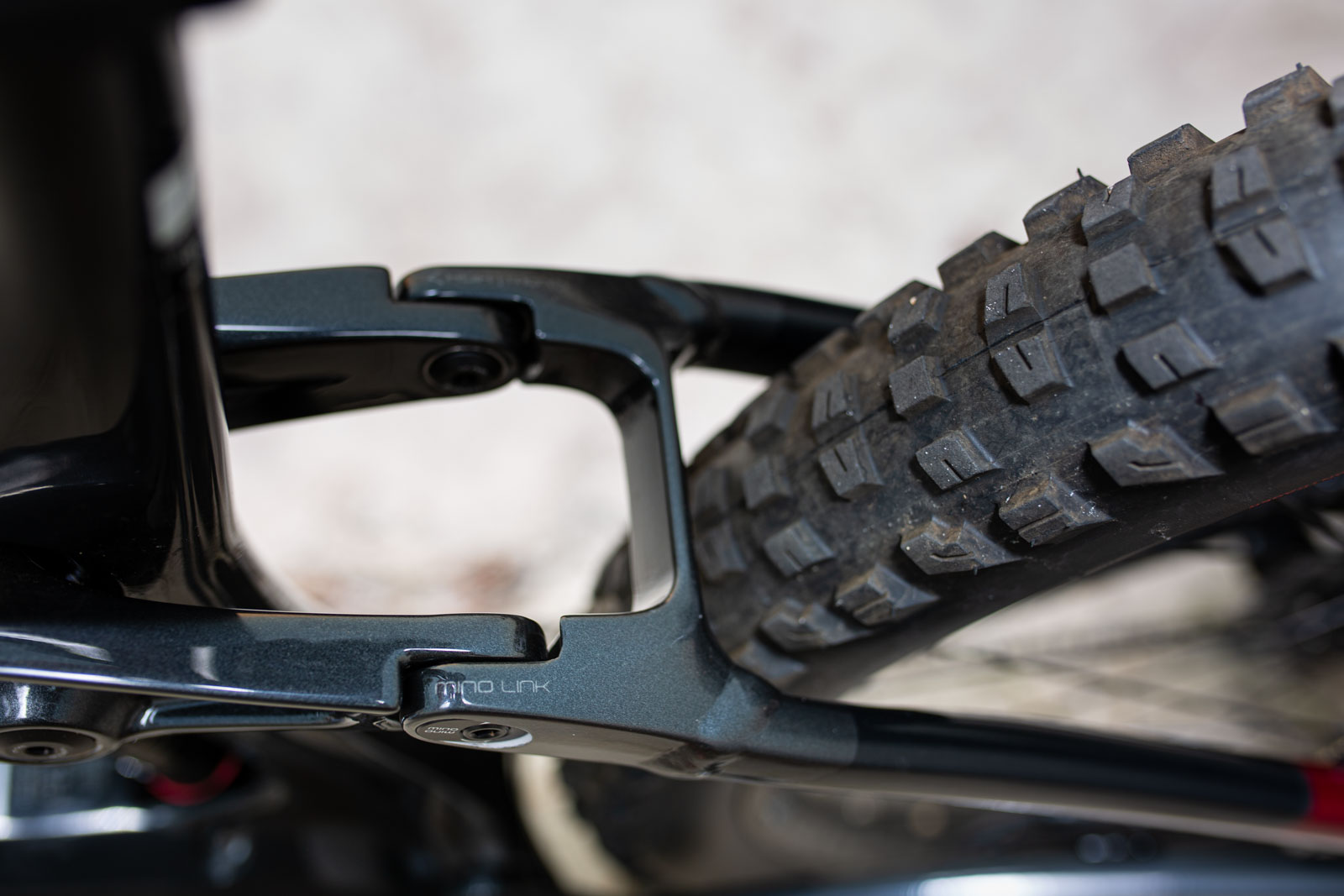
Being the LT spec, the frame is built around 150mm of travel, with a RockShox Deluxe RL looking after the back wheel and a 160mm RockShox Yari RL boinger at the front. Trek uses it’s ABP suspension linkage; the rear pivot is concentric to the rear axle, and a rocker link drives the shock which is fixed to the frame at the other end — the new Fuel EX also features a similar setup which is stiffer, and supposed to allow for short stays.
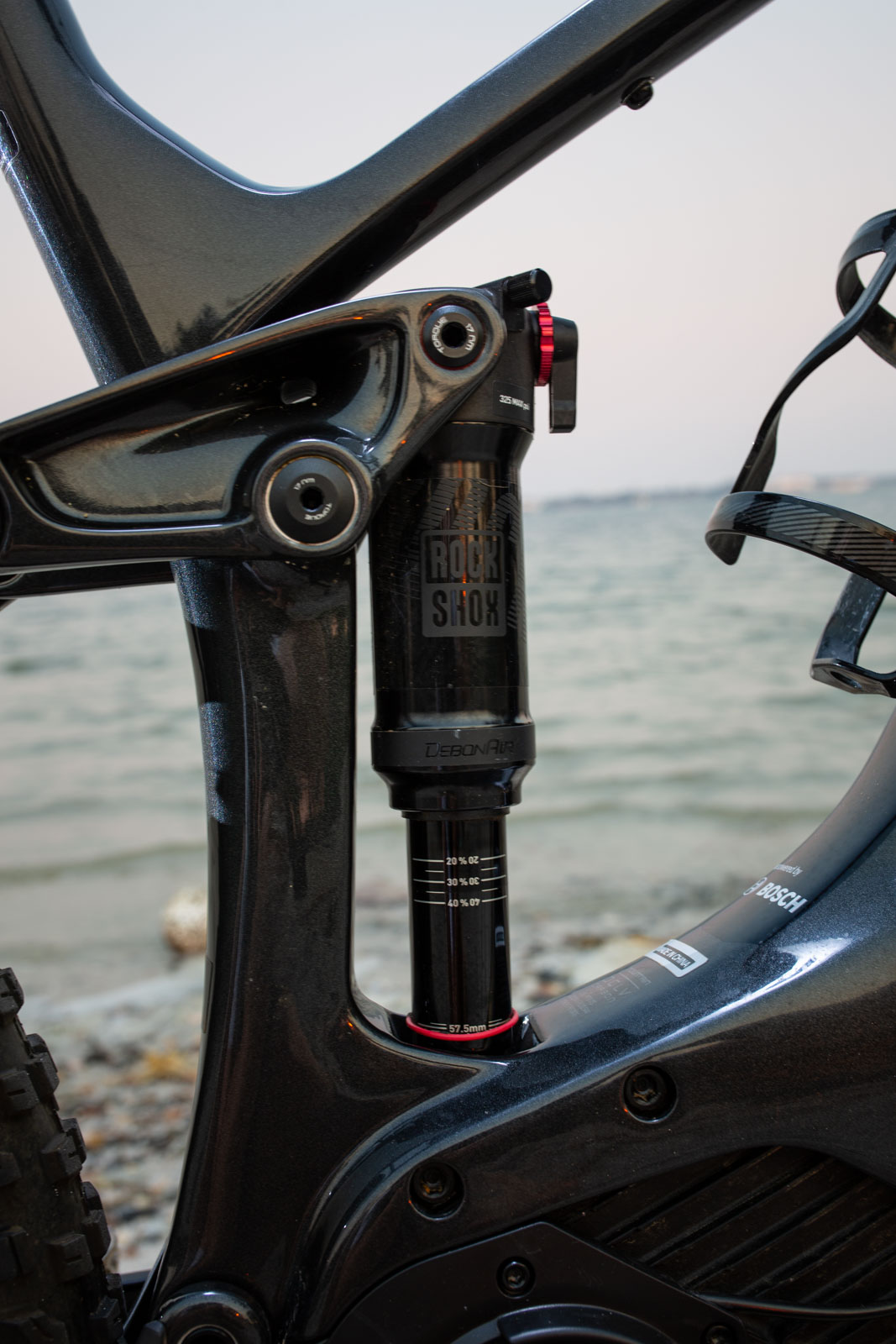
Trek has added some nice touches like the Knock Block system that prevents the bars spinning in a crash and the fork crown hitting the frame. This allowed Trek to keep the down tube straight, and there are rubber bumpers as a backup should you go down really hard.
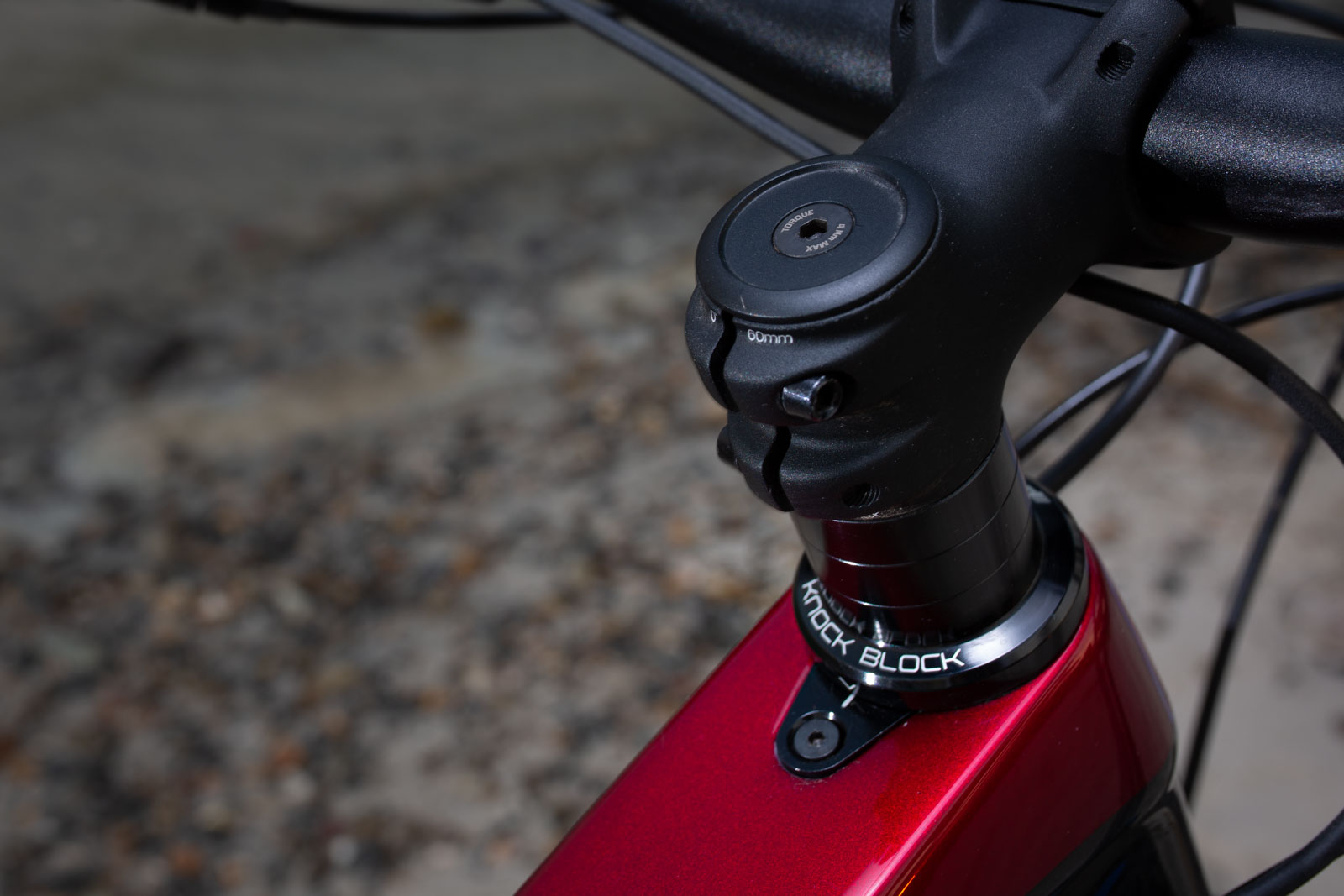
The bike rolls on wide Bontrager Line Comp 40 wheels which are finished in plump 27.5 x 2.8in Bontrager XR4 Team Issue rubber. Holding the Bongrater Arvada is a TranzX dropper post, with the rest of the finishing kit provided by Bontrager.
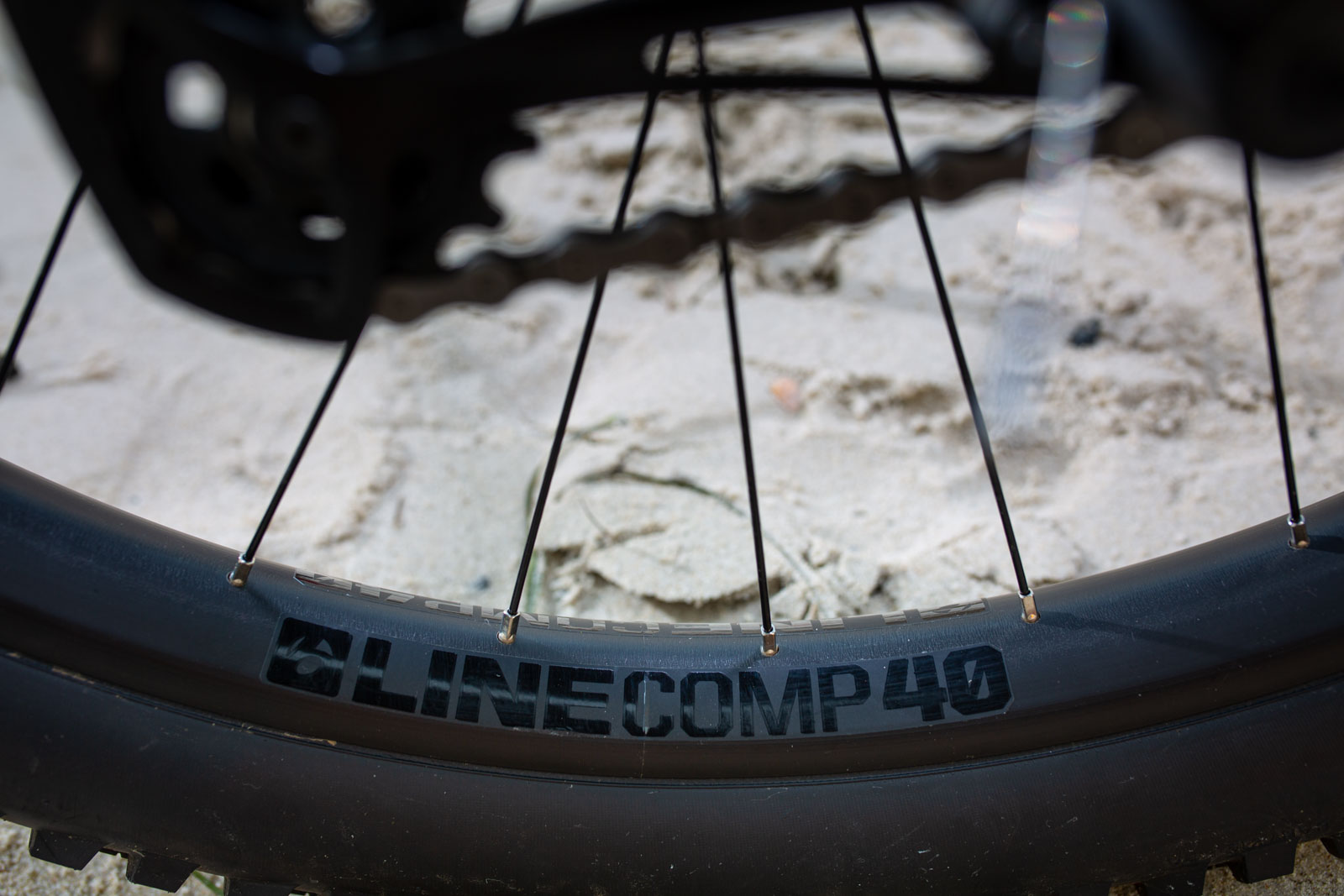
On the trail with the Trek Powerfly LT
With well over a metre between the tyres, your weight is centred between the axles, and the Powerfly 9.7 LT is an absolute beast on the climbs. Even with the slack-by-today’s-standard 73.5-degree seat angle, the front wheel stays planted, and you can sit straight up in the saddle on inclines that would otherwise have you riding on the rivet. As the trail gets steeper, the rear digs its claws in, and it’s incredible what you can actually winch your way up aboard the Powerfly.
When things get twisty, it feels like you should be wearing a life vest and a captain's hat, with the length, and weight of the bike it's like driving a boat and takes quite a bit of muscle to pilot the Powerfly through a tight switchback. In the M/L size, the length feels balanced; however, the 475mm chainstays are constant throughout all of the sizes, and for vertically challenged riders on smaller sizes, getting the back end around would likely be cumbersome.
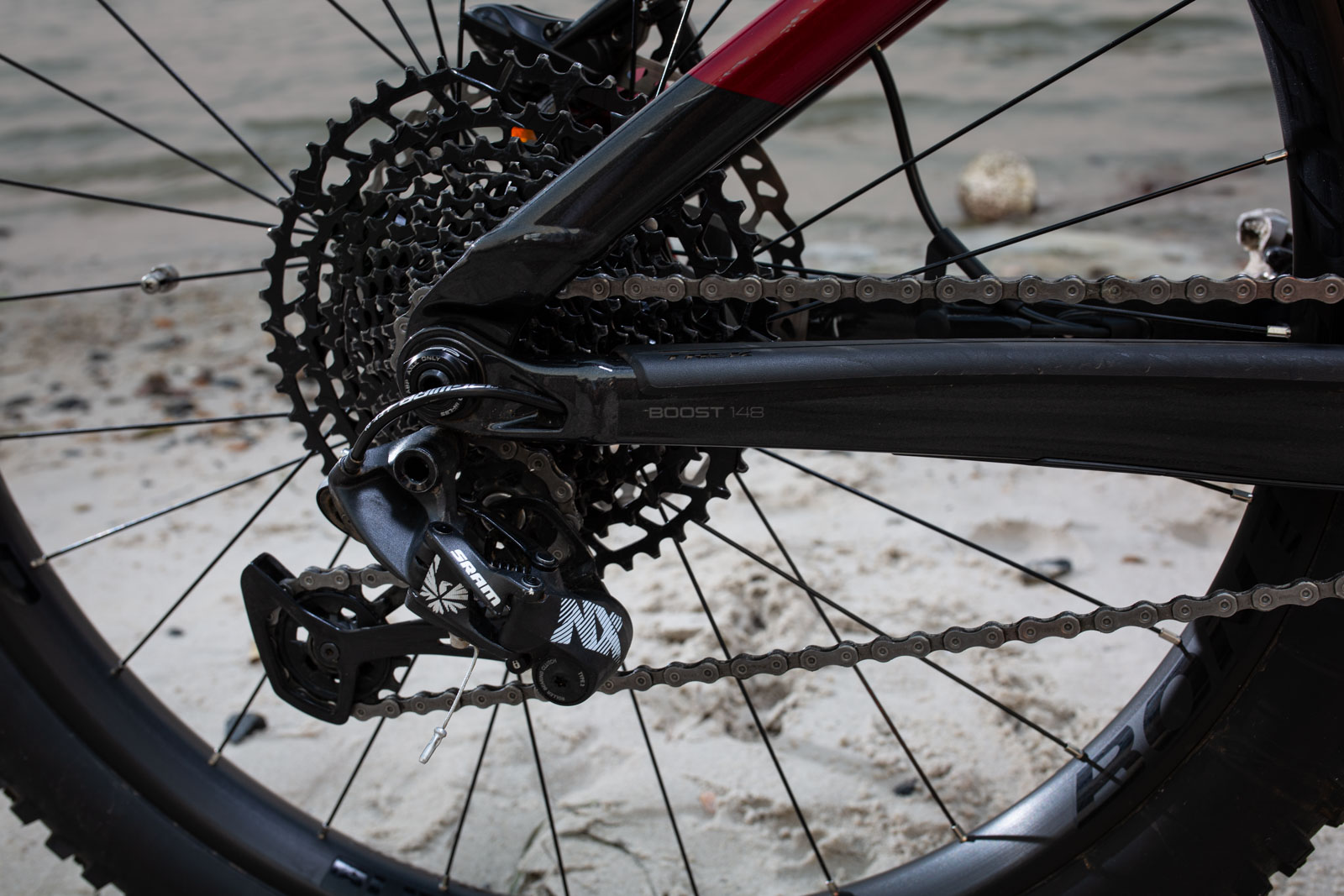
Once you’ve come over the crest of a climb and the trail points down, the long and heavy bike is planted and sure-footed. It's a confidence-inspiring descender, backed further by the fat XR4 Team Issue rubber and powerful brakes which together allow you to brake hard and late without skidding right past the corner. The extra weight of the bike calms the suspension through skittery rough terrain adding to the planted ride feel.
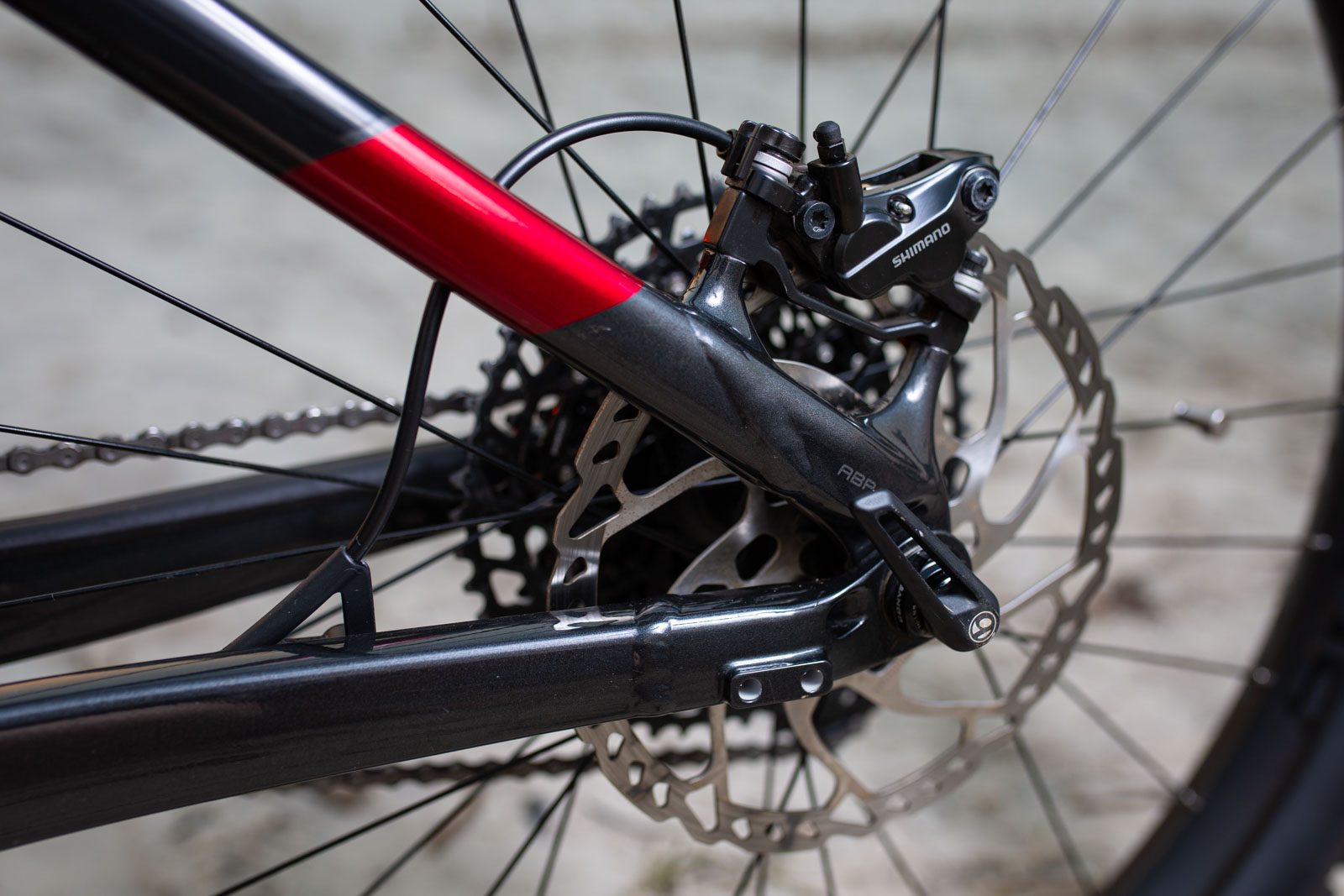
It’s far from agile, and you won’t be skipping and hopping between lines, but if you loosen your grip on the powerful four-pot Shimano brakes and let gravity take over the bike will carry you through whatever the trail throws in front of you.
The Bosch Performance CX motor makes mountains into molehills, and Bosch’s EMTB mode tailors the assistance from Eco to Turbo based on the terrain and your pedalling input, delivering just the right amount of power when you need it. The system is smart and works as advertised with without the death speed that Turbo mode can have in tight and techy sections of trail. It's also the most efficient way to prolong the range of the battery. On the bars, the Purion controller is easy to read and uncluttered, and the large buttons make it easy to switch between modes without taking your hands off the bars.
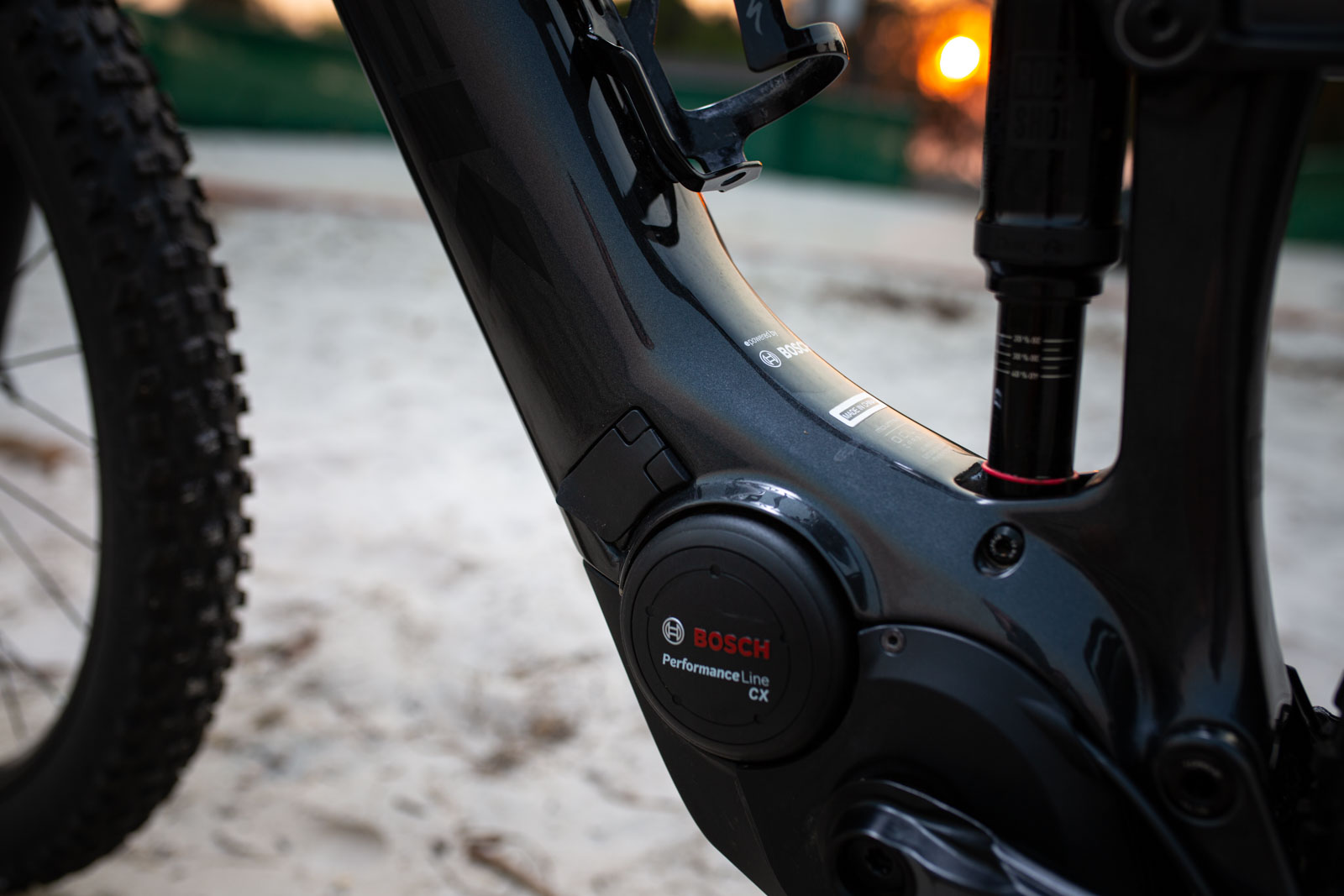
How far you the bike will take you depends not only on the terrain you’re riding but also how much you weigh. At 70kg, I got 66km out of a single charge with 1500m of climbing on Eco mode before the bike died about 200m from where I was staying. It was a heartbreaking defeat because pedalling without the motor feels like you’re riding with both brakes on.
With the RIB battery and a burly bash guard underneath the motor, the drive system is well protected; however, the small front chainrings are an absolute magnet for mud.
The Powerfly 9.7 LT is the highest spec that Trek AU brings into the country, and the component choice is solid, but there’s nothing particularly stand out. The Deluxe RL at the back gets the job done, though I’d love to see this model come with the RE:aktiv version of the shock. At the front, the Yari RL fork sees a Debonair air spring and the brand's Motion Control damper. The tune was bang on, and I never felt the need to reach for the climb switch at either end. When pushing the bike especially hard, there is an inkling of flex through the fork, so big or aggressive riders may need an upgrade.

Trek opted to spec the Powerfly with 2.8in monster truck tyres, which offer oodles of traction on looser surfaces, however, in a techy rocky section of trail the tyres ping around even at low pressure and are a bit too round for my personal taste.
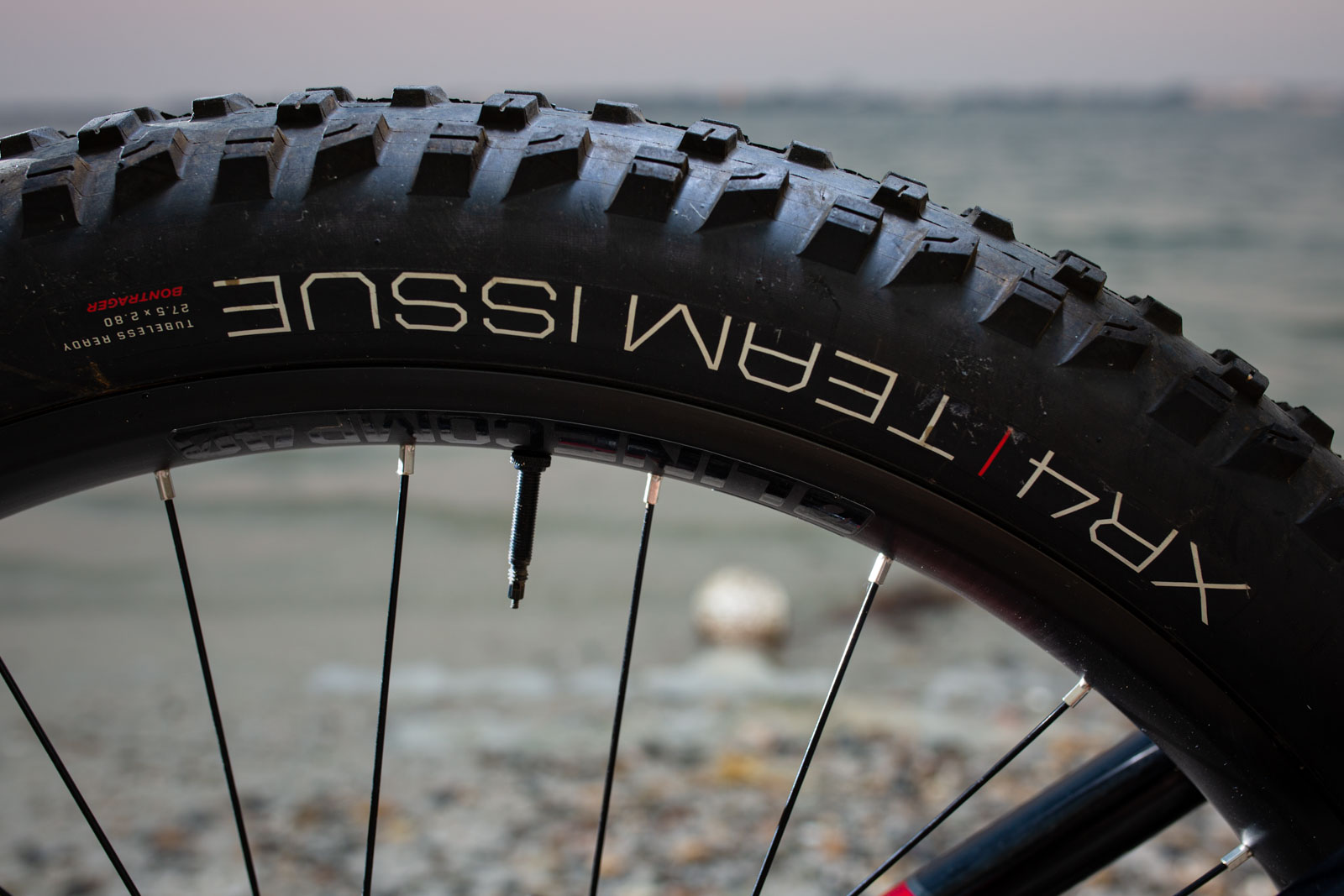
Our Take
The Powerfly is hoot to ride in this specific size; I fear shorter rides may find the back end hard to bring around given the rear centre length.
Even though it's a bit piggy on the scale, it's not a big difference compared to othe eMTBs with 150mm of travel. The length and powerful motor will get you up inclines you wouldn't otherwise be able to climb, and you won't even have to slide forward on the saddle. If you're someone who likes to manual out of corners, pop in and out of lines, something quite a bit shorter and quicker will be your ticket. And that could well be the all-new Trek Rail when it arrives, as the rear centre drops to 447mm, along with other changes in geometry and the latest Bosch Gen 4 motor.
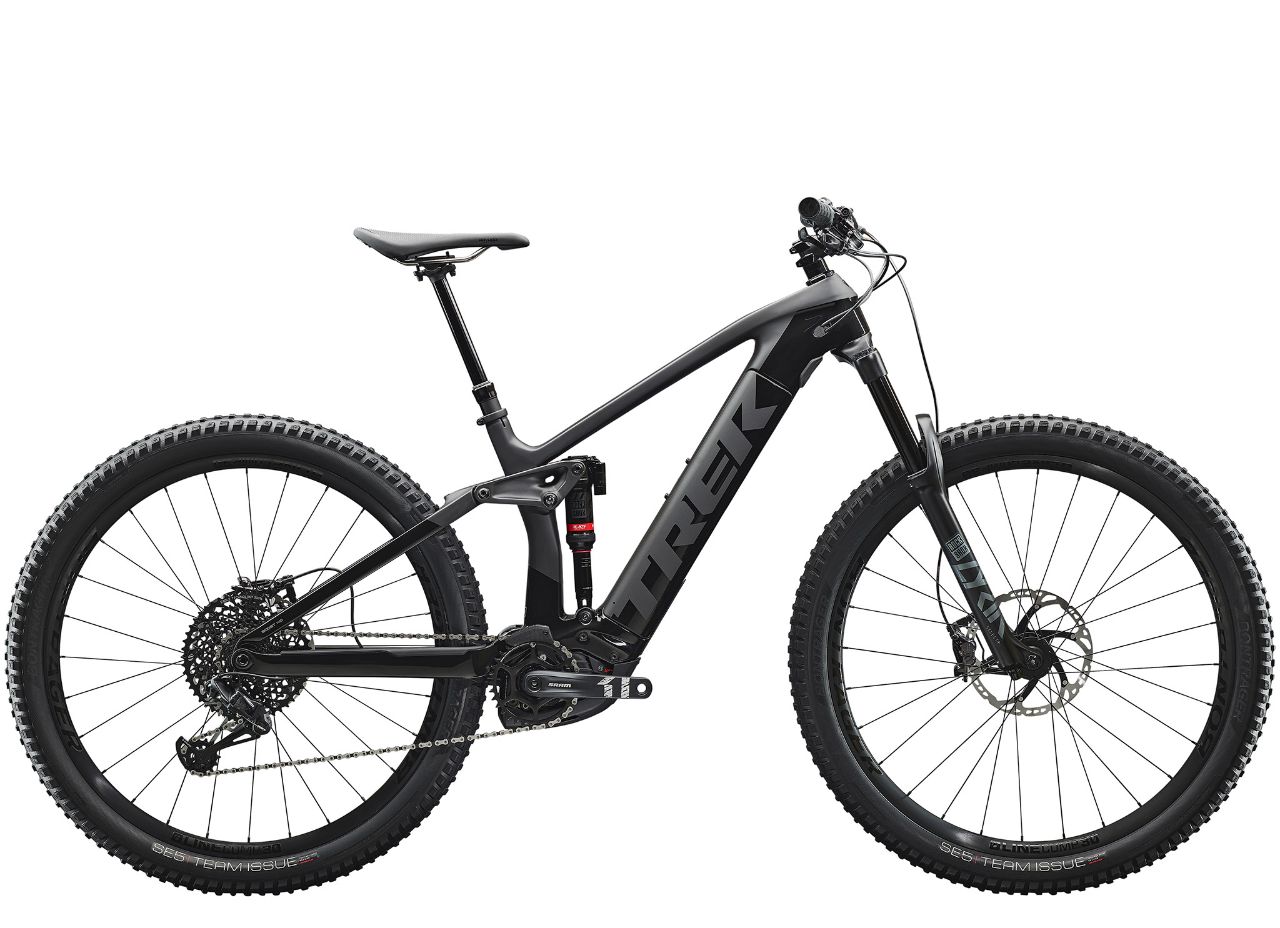
If you're a point and pray downhill charger, the Powerfly LT will be your new best friend. It's composed when the terrain gets rowdy, and with it's climbing prowess you'll be able to sneak in one more shuttle lap, even with the nasty fire road climb.
Trek Powerfly LT 9.7
RRP: $7,749.99 (currently $6749!)
Weight: 23.3kg as tested
Available Sizes: S, M, ML, L, XL
Frame Material: OCLV Carbon
Fork: RockShox Yari RL, 160mm
Shock: RockShox Deluxe RL, 150mm
Shifter: SRAM NX Eagle single-click, 12-speed
Derailleur: SRAM NX Eagle
Crank: Race Face Aeffect, 15T, 165 mm length
Chain: SRAM NX Eagle, 12-speed
Cassette: SRAM PG-1230 Eagle, 11-50, 12-speed
Wheels: Bontrager Line Comp 40
Tyres: Bontrager XR4 Team Issue, Tubeless Ready, Inner Strength sidewalls, aramid bead, 120 tpi, 27.5×2.80"
Brakes: Shimano MT520 4-piston hydraulic disc, 200mm
Stem: Bontrager Rhythm Comp, 31.8mm, Knock Block, 0-degree, 60 mm length
Handlebars: Bontrager Rhythm Comp, alloy, 31.8 mm, 15 mm rise, 780mm width
Seatpost: TranzX JD-YSP18, 31.6 mm, 425 mm length
Saddle: Bontrager Arvada
